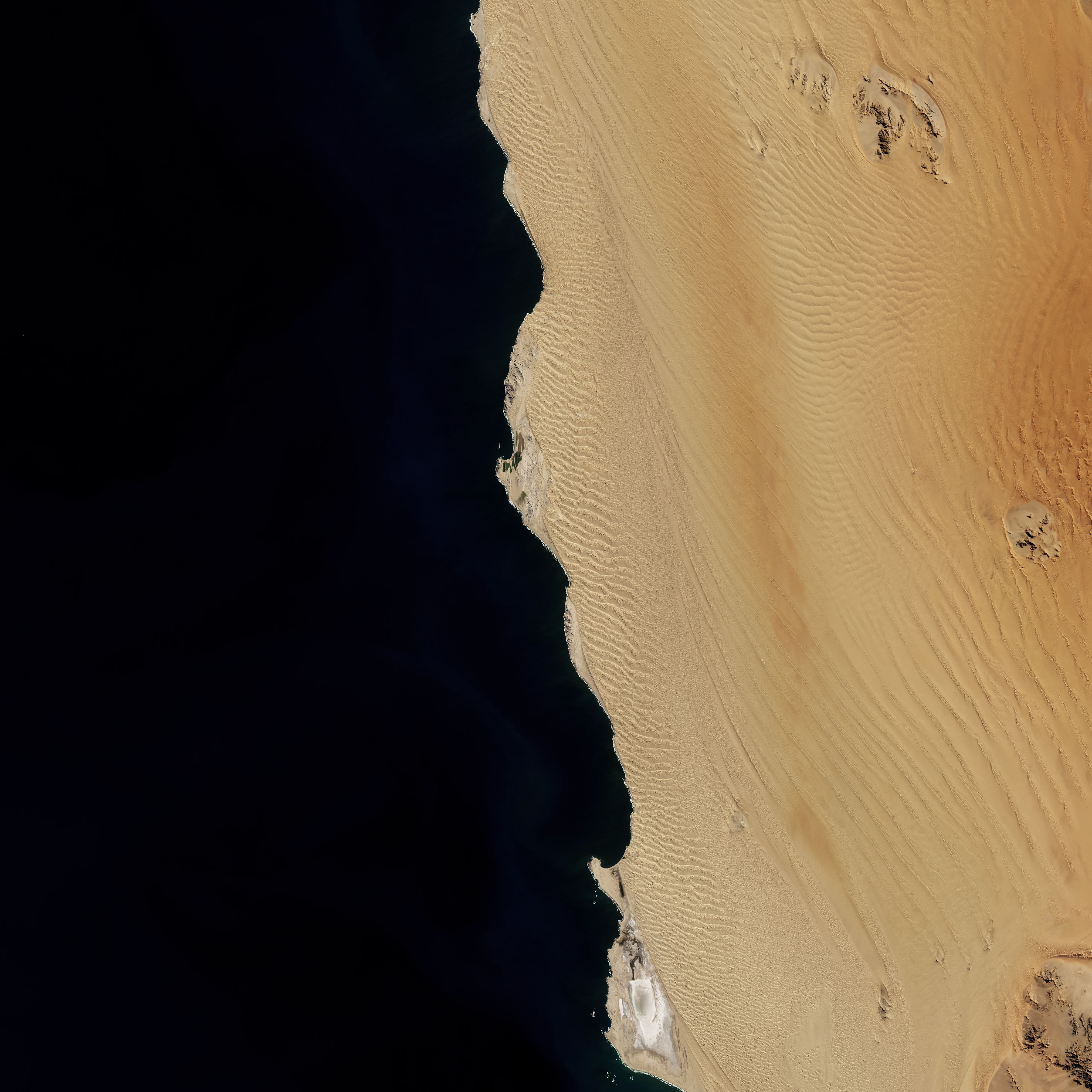[:ja]NASAの地球観測衛星Landsat 8が撮影したナミビア、ナミブ砂漠の残丘(インセルベルク)です。

残丘(ざんきゅう)は、準平原の中に存在する孤立した丘のことで、一般に、そこだけが周囲よりも岩盤が硬いために、断層運動や浸食によって、侵食から取り残されたものです。累層が順序良く重なる地帯では、地形輪廻のような浸食を受けても、取り分けて目立った残丘は発生しにくいのですが、逆に、断層運動などの地殻変動で累層が切断されたり折り曲げられたりした地帯では、場所によって浸食の度合いが異なるために残丘が発生しやすいとされています。
地上の様子はこちらです。

参考文献: Between the Ripples of the Namib Sand Sea (NASA Earth Observatory)
地球俯瞰画像を見る: LiVEARTH
[Earthview Wonders] No.784: Inselberg of Namib Desert🇳🇦
NASA’s Landsat 8 captured the inselberg, or isolated raised hills, of Namib Desert, Namibia.

An inselberg is an isolated rock hill, knob, ridge, or small mountain that rises abruptly from a gently sloping or virtually level surrounding plain. The inselbergs receive more rainfall than the surrounding lower-elevation dunes. That is because warm air gets pushed up the mountains from winds blowing past, causing water vapor to condense into clouds. Also, the raised land catches more fog coming from the ocean.
The local scenery on the ground is as follows.

Reference: Between the Ripples of the Namib Sand Sea (NASA Earth Observatory)
See earthview photo gallery: LiVEARTH[:en][Earthview Wonders] No.784: Inselberg of Namib Desert🇳🇦
NASA’s Landsat 8 captured the inselberg, or isolated raised hills, of Namib Desert, Namibia.

An inselberg is an isolated rock hill, knob, ridge, or small mountain that rises abruptly from a gently sloping or virtually level surrounding plain. The inselbergs receive more rainfall than the surrounding lower-elevation dunes. That is because warm air gets pushed up the mountains from winds blowing past, causing water vapor to condense into clouds. Also, the raised land catches more fog coming from the ocean.
The local scenery on the ground is as follows.

Reference: Between the Ripples of the Namib Sand Sea (NASA Earth Observatory)
See earthview photo gallery: LiVEARTH[:]